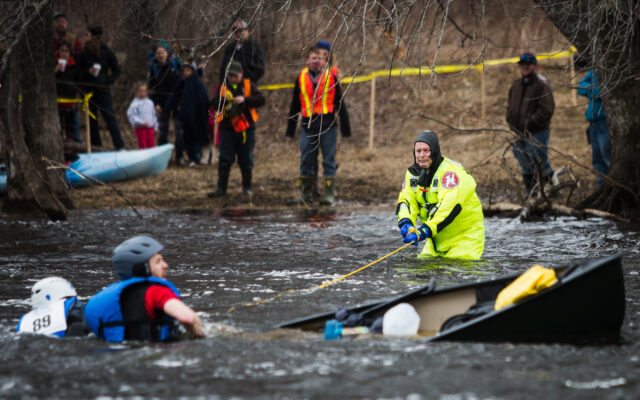
Dirigo Search and Rescue team disbanding after 54 years
By Kathleen O’Brien, Bangor Daily News Staff
After 54 years in operation, an Orono-based search and rescue nonprofit organization will close at the end of November due its dwindling and aging membership.
Dirigo Search and Rescue announced the closure in a Facebook post on Monday. The organization’s search season typically runs from April to November.
The nonprofit was the first to establish local professionally trained volunteer search and rescue teams to assist those who lose their way or are injured in Maine’s wilderness.
“With the changing times, it’s time to step away and let the next generation take over,” the Facebook post read. “We appreciate and care for all our followers and former members who have made the past 54 years so memorable, exciting and fun.”
Dirigo Search and Rescue Founder Dave Martin said he’ll miss working with the organization’s youth division and training high school students the most.
Prior to the COVID-19 pandemic, Dirigo Search and Rescue had from 15 to 18 adult and roughly six youth volunteers in its arsenal, but lost about 15 of those members during the pandemic.
At its membership peak in the 1980s, the nonprofit boasted approximately 25 members, Martin said.
The remaining members will either retire or join other local rescue organizations within the Maine Association for Search And Rescue, such as Highlands Search and Rescue and North Search and Rescue, he said.
Martin, 76, formed Dirigo Search and Rescue as a recent college graduate with his older brother after the pair helped look for a young boy who went missing from a Boy Scout camp in Eddington one spring night. The boy was found unharmed the next morning.
“At the time, we were the only organized search and rescue team in the state,” Martin said.
Since then, other volunteer search and rescues have cropped up throughout the state. The Maine Association for Search And Rescue formed in 1990 and Maine passed a law in 2003 that put the Maine Warden Service in charge of search and rescue missions.
“Maine is one of only nine states where the search and rescue authority is established by law,” Martin said. “Maine is recognized nationally as a very progressive search and rescue state and several other states use our training model.”
Martin said the warden service will typically search for a missing person until dark, then call the Maine Association for Search And Rescue, which will deploy local volunteer search and rescue teams to help.
Dirigo Search and Rescue will bring a trailer that’s used as an office to keep track of the volunteers, then send out search groups in different formations, depending on the situation, Martin said.
A team of from three to five people can conduct a “hasty search” in which volunteers stick to roads, trails and power lines in a search area. Eight to 10 people can also do a “grid search” in which volunteers walk in an evenly spaced line to thoroughly sweep an area, Martin said.
Other organizations, the warden service and the Maine Forest Service all have different resources, such as search dogs, mounted searchers and aircraft and drones that can help, he said.
Over its more than five decades in operation, Martin estimated the team has been called to find at least 500 people, most of whom were lost hikers, hunters, children and people with dementia.
Though Martin said the group had “a few good finds over the years” among the at least 500 people they found, no save is especially prominent in Martin’s memory.
What does haunt him are the people the team never found, or didn’t find in time.
“There was one particular search on the Chimney Pond Trail on Katahdin where we spent five days looking for a hiker that was never found,” he said.
Aside from individual search calls, Dirigo Search and Rescue has stood by to help anyone who runs into trouble during the annual Kenduskeag Stream Race and Machias River Race throughout the years, Martin said.
Martin said he isn’t sure what’s next for him, because he’s still working to figure out where the nonprofit’s equipment and financial assets will go following the closure.